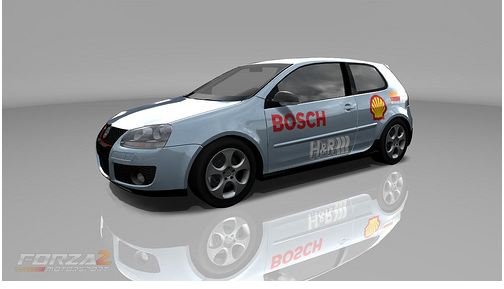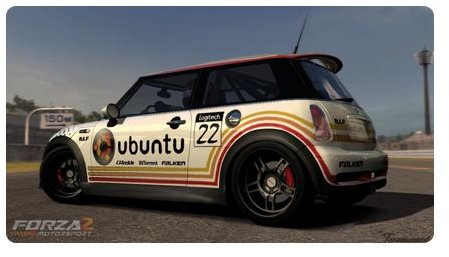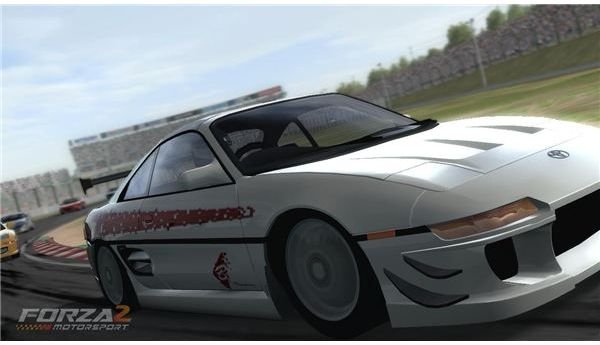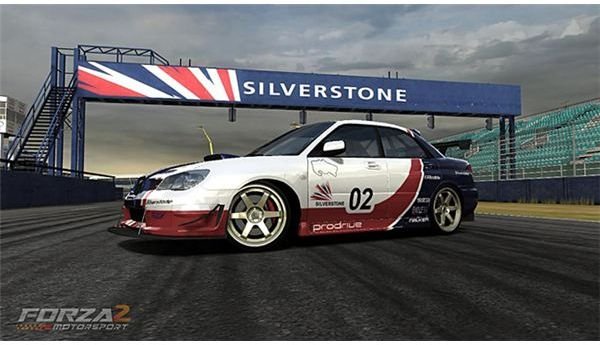Forza 2 Car Guide: Discover The Give 5 Best Cars For Beginners

Before Hardcore
There is no doubt that the Forza series is one of the greatest racing franchises ever made. While other franchises - like Burnout and even Gran Turismo - have made a name for themselves based on fast arcade-line mechanics that encourage insane drifts and impossible maneuvers, Forza 2 is a much different beast. It is the most realistic racing simulation available, and while that has likely cost it some sales, it also makes it a unique experience.
Unfortunately part of Forza’s experience is difficulty, and Forza 2 only reinforced this idea. The cars in Forza 2 handle as you’d expect cars to handle in real life. You can’t steer them around a fast corner by using the hand-brake, and you can’t expect a heavy car to go around a tight bend at anywhere near the same speed as a light one. The physics of each car is modeled realistically, and this means that some of the cars in the game are absolute barbarians - just as in real life. Treat them even slightly wrong, and you’ll find yourself flying into the gravel. Forza 2 makes no mention of which cars are difficult, so picking the right car can be impossible if you’re new.
Of course, this is where this guide comes in. The 5 cars listed here are easy to drive, can be modified to fit different class and horsepower ratings, and are easy to buy early in the game.
1997 BMW M3 E36
This older-model BMW M3 is quite a bit less powerful than the newer versions, but it is also far less expensive, making it easily available to new players. The comparative lack of power is in fact a very good thing for newer players, as it helps ensure that you won’t find yourself on another continent when you mess up, and it also makes this car available in a wider variety of classes - you can use it for class C, B, and A.
But like all the cars on this list, the real reason the BMW M3 E36 is a good beginner’s car is its wonderful handling and excellent response. Despite being rear-wheel drive, which is typically much more difficult to handle than front-wheel or all-wheel drive, the BMW M3 E36 doesn’t go into a tailspin at the slightest hint of trouble. There is a great deal of grip to be had - even without any upgrades - and once grip is lost the car will merely begin to lose its tail slightly, allowing you to take your foot off the pedal and right yourself. Understeer isn’t anywhere to be found, so you can take corners with surprising speed.
The BMW M3 E36 reacts well to power upgrades, and reacts very well to tire upgrades. Putting track tires on it gives it an incredible amount of grip. The BMW M3 E36 also reacts well to weight-reduction upgrades. The curb weight of this car is almost 3,300 pounds, which is fairly porky and the only area of weakness.
2006 VW Golf GTI Mk5

In real life, the Volkswagon GTI is a staple hot-hatchback; Its affordable, quick, and easy to drive fast. These traits translate well to Forza 2 rendition of the VW Golf GTI Mk5. The price of the VW Golf GTI Mk5 is low enough that you can buy it at the beginning of your career, and use it in numerous German, boosted, and hot-hatchback events that occur during the early parts of the game.
At its core, the Golf GTI Mk5 is at least as fast as any competitors, and its greatest strength is a meaty engine with lots of torque available in the lower revs. This compares favorably to some of the Asian small cars which - while lighter - have engines that have to be kept near red-line in order to produce any torque or power. On curvy tracks, the Golf GTI Mk5 can use this to its favor, shooting out of the corners while the Asian competitors try to get revs back into their power-band.
The Golf GTI Mk5 is also a very stable car, but it has the possibility for lift-off over-steer when upgraded and driven hard. This means it can flicked around some surprisingly tricky corners with ease.
2003 Mini Cooper S

Another front-wheel drive hot-hatch, many of the core characteristics of the Mini Cooper S are similar to the Golf GTI Mk5. The Cooper S is cheap, quick, easy to flick into corners, and when driven hard it responses with predictable understeer which can be easily averted by letting up on the throttle.
The Cooper S does however, have some important differences. The first is weight. The Cooper S has been praised for Go-Kart like handling in real-life reviews, and this praise continues through the game. The Cooper S can brake better than the Golf GTI Mk5 due to being several hundred pounds lighter, and that means the Cooper S can maintain speed longer on the straights. The Cooper S also handles tight turns even better than the Golf GTI Mk5. It doesn’t exhibit the same kind of lift-off oversteer, but it doesn’t need to.
The only weakness of the Cooper S is an engine that feels rather mushy all over, never providing great acceleration or response. It also is a car that tends to become easily overwhelmed by boosts in horsepower, so it isn’t a good idea to take this car higher than class C.
1995 Toyota MR2

Toyota’s small mid-engined MR2 is probably one of the most versatile cars in the entire game. This is thanks to its low entry price, combined with a layout that has more in common with high-end Porsches than the Asian coupes and hatchbacks the normally dominate the D and C brackets. This is a rear-wheel drive car, and that means that unlike front-wheel drive cars - which typically can’t be used much beyond B class - the MR2 can be upgraded all the way to the top of A - although going into S class is probably a bit much.
On the track, the MR2 handles with the grace you’d expect from a low, light car. Being mid-engined and rear-wheel drive, it certainly tends to oversteer far more than understeer, and it can feel a bit heavy when driving around long, gradual turns. That said, being light and rear-wheel drive means that you’ll have outstanding traction in the hairbend turns. And while the MR2 can be a bit difficult with stock tires - grip can break suddenly if you push the car to hard - simply putting upgraded to sport tires makes the car hang on to bends as if velcroed to the track.
2005 Subaru WRX STI

Subaru’s WRX is one of the most iconic tuner cars to appear in the last decade, and for good reason. In real life it is quick, can easily handle twice as much power as it has stock, responds quickly to driver input, and remains practical. These traits carry over to the Forza 2 version, and while its four doors and generous trunk may not help you on a track, its four constantly spinning wheels will.
The 2005 Subaru WRX STI handles predictably, which is exactly what a beginning player will want. It grips and grips and grips, and when you begin to test its limits, it starts to understeer. Spinning out is very near impossible - even when you hit the gravel - which is perhaps this car’s most beginner-friendly aspect. Because it is AWD, you’ll be able to deal with brief detours off-track without much trouble.
Price also helps. Though not as cheap as the MR2 listed above, it shares the MR2’s ability to be upgraded into the stratosphere and remain effective. Add horsepower, and the AWD will plant the power nicely. Add better tires and some down-force, and it will stick to the road like no other car besides a Lancer Evo. But best of all, the Subaru WRX STI is light for an AWD car. Cars like the Audi S4 are also very capable AWD cruisers, but their significant weight offsets the grip gained from AWD.
